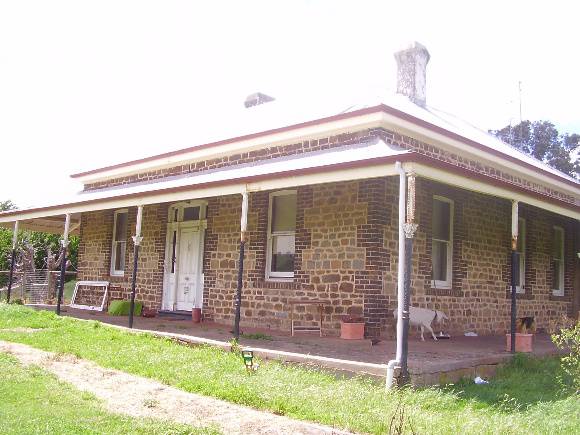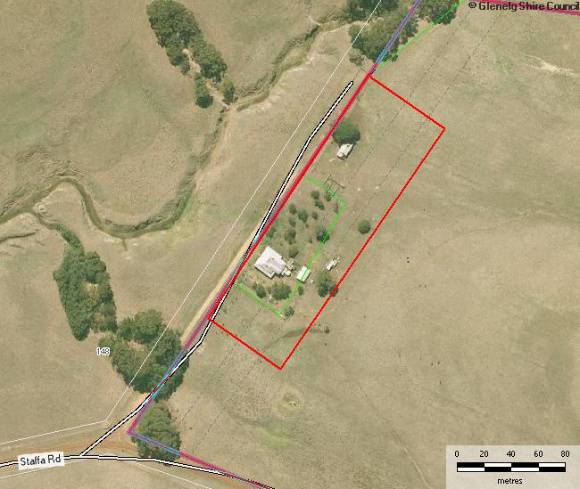| Back to search results » | Back to search page » |
|
Tulleigh
Other NameKOCH RESIDENCE (FORMER) Location74 STAFFA ROAD, CASTERTON, GLENELG SHIRE LevelRecommended for Heritage Overlay |
|
Statement of Significance
What is significant?
The former residence of selector, Charles Joseph Koch (1840-1900), located at 74 Staffa Road, Casterton was a substantial and is now an increasingly rare example of the homesteads built as a result of the Land Selection Acts of the 1860s. Koch, who became the 'largest farmer in the district', was born in Hanover, Germany. He married Sarah Foster Stanford in 1866 with whom he had six children, establishing a family still represented in the district. The homestead was built in two parts. The earlier vernacular section dates from the 1870s, and is constructed of local ironstone with hand made local red brick detail around the doors and windows. The later section is also constructed with local stone and brickwork, but appears to have been built by local builder, J. Wiltshire, who was responsible for supplying the bricks and for building the Casterton Roman Catholic Parish Hall in 1900. The bricks for both the new section of the Koch Residence and the Parish Hall appear to be the same. This section is a conservative interpretation of the Italianate style. It is not known whether an architect was involved with the new section of the Koch residence, and it is unlikely that an architect designed the earlier wing. The interiors of the newer section are fine, with timber and marble fire surrounds and mantles in each room, and fine joinery detail on the doors, door surrounds, windows and skirting boards. The house retains an excellent degree of integrity and is in very good condition.
How is it significant?
The former Koch residence is of architectural and historical significance to the Glenelg Shire.
Why is it significant?
The former Koch residence and its allotment, acquired more than 130 years ago, has historical significance as an increasingly rare survivor of the many farm properties established in the Glenelg Shire by selectors during the later 1860s and 1870s on land previously occupied by pioneer squatting families. It is architecturally significant as an example of the way that building fabric and construction techniques can illustrate the changing fortunes of owners. The early, vernacular section represents C. J. Koch's beginnings as a small modest selector, while the newer section with its sense of style and refinement, represents his success as a pastoralist and large farmer.
Group
Residential buildings (private)
Category
Residence





